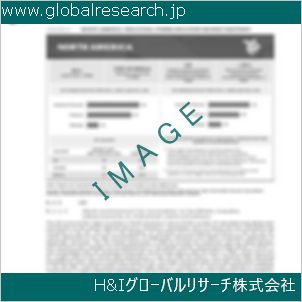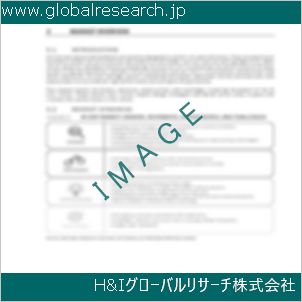Table of Contents
1 Industry Overview of Paraffinwax
1.1 Definition and Specifications of Paraffinwax
1.1.1 Definition of Paraffinwax
1.1.2 Specifications of Paraffinwax
1.2 Classification of Paraffinwax
1.3 Applications of Paraffinwax
1.3.1 Nuclear Application
1.3.2 Non-Nuclear Application
1.4 Industry Chain Structure of Paraffinwax
1.5 Industry Overview and Major Regions Status of Paraffinwax
1.5.1 Industry Overview of Paraffinwax
1.5.2 Global Major Regions Status of Paraffinwax
1.6 Industry Policy Analysis of Paraffinwax
1.7 Industry News Analysis of Paraffinwax
2 Manufacturing Cost Structure Analysis of Paraffinwax
2.1 Raw Material Suppliers and Price Analysis of Paraffinwax
2.2 Equipment Suppliers and Price Analysis of Paraffinwax
2.3 Labor Cost Analysis of Paraffinwax
2.4 Other Costs Analysis of Paraffinwax
2.5 Manufacturing Cost Structure Analysis of Paraffinwax
2.6 Manufacturing Process Analysis of Paraffinwax
3 Technical Data and Manufacturing Plants Analysis of Paraffinwax
3.1 Capacity and Commercial Production Date of Global Paraffinwax Major Manufacturers in 2023
3.2 Manufacturing Plants Distribution of Global Paraffinwax Major Manufacturers in 2023
3.3 R&D Status and Technology Source of Global Paraffinwax Major Manufacturers in 2023
3.4 Raw Materials Sources Analysis of Global Paraffinwax Major Manufacturers in 2023
4 Capacity, Production and Revenue Analysis of Paraffinwax by Regions, Types and Manufacturers
4.1 Global Capacity, Production and Revenue of Paraffinwax by Regions 2019-2024
4.2 Global and Major Regions Capacity, Production, Revenue and Growth Rate of Paraffinwax 2019-2024
4.3 Global Capacity, Production and Revenue of Paraffinwax by Types 2019-2024
4.4 Global Capacity, Production and Revenue of Paraffinwax by Manufacturers 2019-2024
5 Price, Cost, Gross and Gross Margin Analysis of Paraffinwax by Regions, Types and Manufacturers
5.1 Price, Cost, Gross and Gross Margin Analysis of Paraffinwax by Regions 2019-2024
5.2 Price, Cost, Gross and Gross Margin Analysis of Paraffinwax by Types 2019-2024
5.3 Price, Cost, Gross and Gross Margin Analysis of Paraffinwax by Manufacturers 2019-2024
6 Consumption Volume, Consumption Value and Sale Price Analysis of Paraffinwax by Regions, Types and Applications
6.1 Global Consumption Volume and Consumption Value of Paraffinwax by Regions 2019-2024
6.2 Global and Major Regions Consumption Volume, Consumption Value and Growth Rate of Paraffinwax 2019-2024
6.3 Global Consumption Volume and Consumption Value of Paraffinwax by Types 2019-2024
6.4 Global Consumption Volume and Consumption Value of Paraffinwax by Applications 2019-2024
6.5 Sale Price of Paraffinwax by Regions 2019-2024
6.6 Sale Price of Paraffinwax by Types 2019-2024
6.7 Sale Price of Paraffinwax by Applications 2019-2024
6.8 Market Share Analysis of Paraffinwax by Different Sale Price Levels
7 Supply, Import, Export and Consumption Analysis of Paraffinwax
7.1 Supply, Consumption and Gap of Paraffinwax 2019-2024
7.2 Global Capacity, Production, Price, Cost, Revenue, Supply, Import, Export and Consumption of Paraffinwax 2019-2024
7.3 USA Capacity, Production, Price, Cost, Revenue, Supply, Import, Export and Consumption of Paraffinwax 2019-2024
7.4 EU Capacity, Production, Price, Cost, Revenue, Supply, Import, Export and Consumption of Paraffinwax 2019-2024
7.5 China Capacity, Production, Price, Cost, Revenue, Supply, Import, Export and Consumption of Paraffinwax 2019-2024
7.6 Japan Capacity, Production, Price, Cost, Revenue, Supply, Import, Export and Consumption of Paraffinwax 2019-2024
8 Major Manufacturers Analysis of Paraffinwax
8.1 Manufacturer One
8.1.1 Company Profile
8.1.2 Product Picture and Specifications
8.1.2.1 Type I
8.1.2.2 Type II
8.1.2.3 Type III
8.1.3 Capacity, Production, Price, Cost, Gross and Revenue
8.1.4 Contact Information
8.2 Manufacturer Two
8.2.1 Company Profile
8.2.2 Product Picture and Specifications
8.2.2.1 Type I
8.2.2.2 Type II
8.2.2.3 Type III
8.2.3 Capacity, Production, Price, Cost, Gross and Revenue
8.2.4 Contact Information
8.3 Manufacturer Three
8.3.1 Company Profile
8.3.2 Product Picture and Specifications
8.3.2.1 Type I
8.3.2.2 Type II
8.3.2.3 Type III
8.3.3 Capacity, Production, Price, Cost, Gross and Revenue
8.3.4 Contact Information
8.4 Manufacturer Four
8.4.1 Company Profile
8.4.2 Product Picture and Specifications
8.4.2.1 Type I
8.4.2.2 Type II
8.4.2.3 Type III
8.4.3 Capacity, Production, Price, Cost, Gross and Revenue
8.4.4 Contact Information
8.5 Manufacturer Five
8.5.1 Company Profile
8.5.2 Product Picture and Specifications
8.5.2.1 Type I
8.5.2.2 Type II
8.5.2.3 Type III
8.5.3 Capacity, Production, Price, Cost, Gross and Revenue
8.5.4 Contact Information
…
9 Marketing Trader or Distributor Analysis of Paraffinwax
9.1 Marketing Channels Status of Paraffinwax
9.2 Traders or Distributors with Contact Information of Paraffinwax by Regions
9.3 Ex-work Price, Channel Price and End Buyer Price Analysis of Paraffinwax
9.4 Regional Import, Export and Trade Analysis of Paraffinwax
10 Industry Chain Analysis of Paraffinwax
10.1 Upstream Major Raw Materials Suppliers Analysis of Paraffinwax
10.1.1 Major Raw Materials Suppliers with Contact Information Analysis of Paraffinwax
10.1.2 Major Raw Materials Suppliers with Supply Volume Analysis of Paraffinwax by Regions
10.2 Upstream Major Equipment Suppliers Analysis of Paraffinwax
10.2.1 Major Equipment Suppliers with Contact Information Analysis of Paraffinwax
10.2.2 Major Equipment Suppliers with Product Pictures Analysis of Paraffinwax by Regions
10.3 Downstream Major Consumers Analysis of Paraffinwax
10.3.1 Major Consumers with Contact Information Analysis of Paraffinwax
10.3.2 Major Consumers with Consumption Volume Analysis of Paraffinwax by Regions
10.4 Supply Chain Relationship Analysis of Paraffinwax
11 Development Trend of Analysis of Paraffinwax
11.1 Capacity, Production and Revenue Forecast of Paraffinwax by Regions and Types
11.1.1 Global Capacity, Production and Revenue of Paraffinwax by Regions 2024-2029
11.1.2 Global and Major Regions Capacity, Production, Revenue and Growth Rate of Paraffinwax 2024-2029
11.1.3 Global Capacity, Production and Revenue of Paraffinwax by Types 2024-2029
11.2 Consumption Volume and Consumption Value Forecast of Paraffinwax by Regions, Types and Applications
11.2.1 Global Consumption Volume and Consumption Value of Paraffinwax by Regions 2024-2029
11.2.2 Global and Major Regions Consumption Volume, Consumption Value and Growth Rate of Paraffinwax 2024-2029
11.2.3 Global Consumption Volume and Consumption Value of Paraffinwax by Types 2024-2029
11.2.4 Global Consumption Volume and Consumption Value of Paraffinwax by Applications 2024-2029
11.3 Supply, Import, Export and Consumption Forecast of Paraffinwax
11.3.1 Supply, Consumption and Gap of Paraffinwax 2024-2029
11.3.2 Global Capacity, Production, Price, Cost, Revenue, Supply, Import, Export and Consumption of Paraffinwax 2024-2029
11.3.3 USA Capacity, Production, Price, Cost, Revenue, Supply, Import, Export and Consumption of Paraffinwax 2024-2029
11.3.4 EU Capacity, Production, Price, Cost, Revenue, Supply, Import, Export and Consumption of Paraffinwax 2024-2029
11.3.5 China Capacity, Production, Price, Cost, Revenue, Supply, Import, Export and Consumption of Paraffinwax 2024-2029
11.3.6 Japan Capacity, Production, Price, Cost, Revenue, Supply, Import, Export and Consumption of Paraffinwax 2024-2029
12 New Project Investment Feasibility Analysis of Paraffinwax
12.1 New Project SWOT Analysis of Paraffinwax
12.2 New Project Investment Feasibility Analysis of Paraffinwax
13 Conclusion of the Global Paraffinwax (CAS 8002-74-2) Industry 2024 Market Research Report
| ※参考情報 固形パラフィン(Paraffin wax)は、石油精製の過程で得られる、無色または白色の固体であり、主に炭化水素から構成されています。化学的には、パラフィンは飽和炭化水素であり、主に直鎖状のアルカンや分岐状の構造を持っています。固形パラフィンの一般的な化学式はC_nH_{2n+2}で、nは分子内の炭素数を示します。CAS番号8002-74-2が付与されており、これにより他の化学物質と容易に区別できます。 固形パラフィンの特徴の一つは、その高度な安定性です。常温では固体として存在し、耐熱性が比較的高いため、様々な温度条件下での使用が可能です。また、化学的に不活性であるため、他の物質との反応が少なく、保存性にも優れています。さらに、良好な絶縁性を持っているため、電気的用途にも適しています。パラフィンは水に対しては不溶性ですが、有機溶媒に対しては溶解します。 固形パラフィンには主に数種の種類があります。ひとつは、パラフィンワックスと呼ばれるもので、キャンドルや食品包装、化粧品などに広く使用されています。もうひとつは、マイクロクリスタリンワックスで、これはより複雑な分子構造を持ち、主に皮膚保護剤や医薬品の基剤として利用されることが多いです。また、液体状のパラフィン(液体パラフィン)もあり、これもまた異なる用途があります。固形パラフィンと液体パラフィンは、使用される場面や特性が異なるため、それぞれの用途に応じた選定が必要となります。 固形パラフィンの用途は多岐にわたります。最も一般的な用途にはキャンドルの製造があります。パラフィンの燃焼特性は良好で、均一な光を放つため、キャンドル業界では重宝されています。また、食品業界でもパラフィンは幅広く使用されています。たとえば、チーズや果物のコーティングに用いられ、鮮度を保持する役割を果たします。さらに、製菓業界ではチョコレートの仕上げや表面を滑らかにするために使われることもあります。 化粧品においても固形パラフィンは重要な役割を果たしています。スキンケア製品やリップバームにおいては、皮膚を保湿し、バリア機能を高めるために用いられます。このように、固形パラフィンは美容用途にも非常に有用です。 また、固形パラフィンは製造業や建設業でも利用されています。例えば、金型の離型剤として用いられることがあります。さらに、温度管理のための材料としても適しており、特にパラフィンボールのような温度調整機器に使われることもあります。 環境問題への配慮も重要であり、固形パラフィンの使用には新たな視点が求められています。リサイクル、持続可能な資源の採用、バイオベースのパラフィンの開発が進められており、今後のトレンドとして注目されています。バイオベースのパラフィンは、再生可能な資源から得られるため、より環境に優しい製品として期待されています。 固形パラフィンの関連技術も多く存在します。特に、パラフィンの製造プロセスにおいて、精製や脱色、脱臭の技術が重要です。これらのプロセスにより、製品の品質が向上し、用途に応じた特性を持たせることができます。さらには、エマルジョン技術やコーティング技術についても研究が進められており、これにより新たな用途や市場が開発されています。 固形パラフィンは、その安定性や多様性から非常に重要な材料であり、今後も様々な産業において欠かせない存在であり続けるでしょう。使用状況や環境への配慮を考慮しつつ、新たな技術の開発とともに、固形パラフィンの用途はさらに広がりを見せることが期待されます。 |
❖ 免責事項 ❖
http://www.globalresearch.jp/disclaimer












